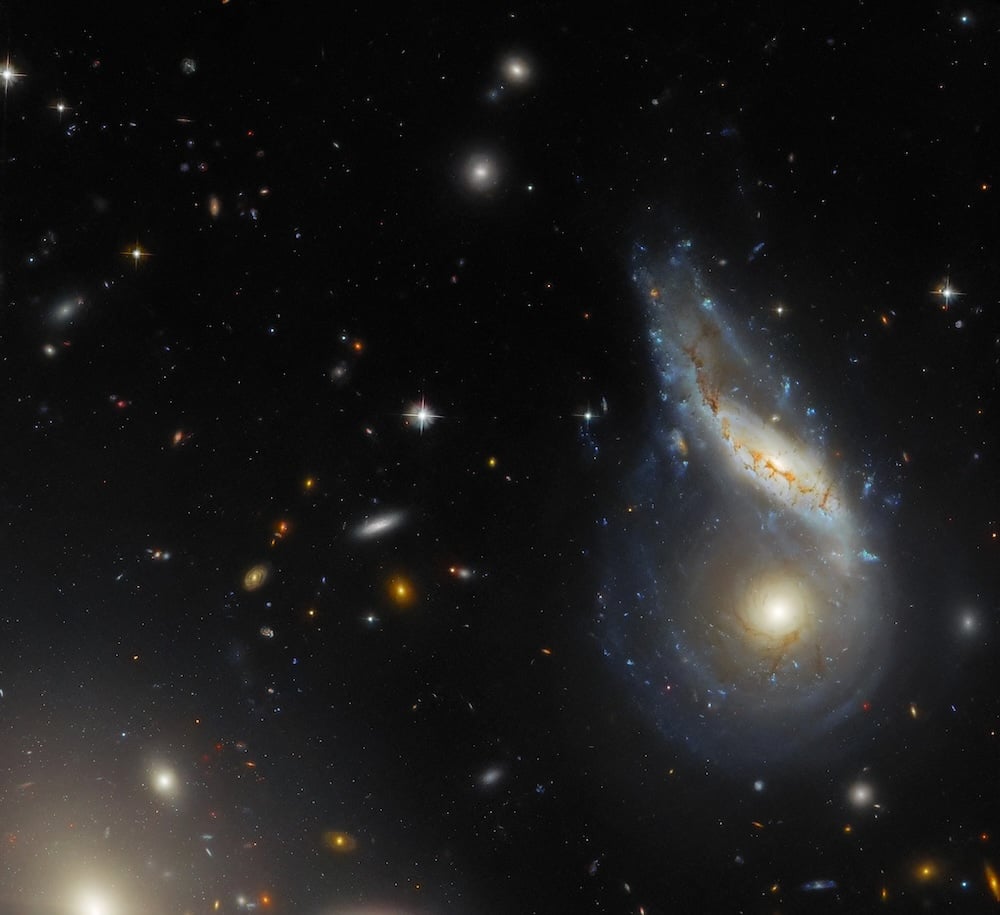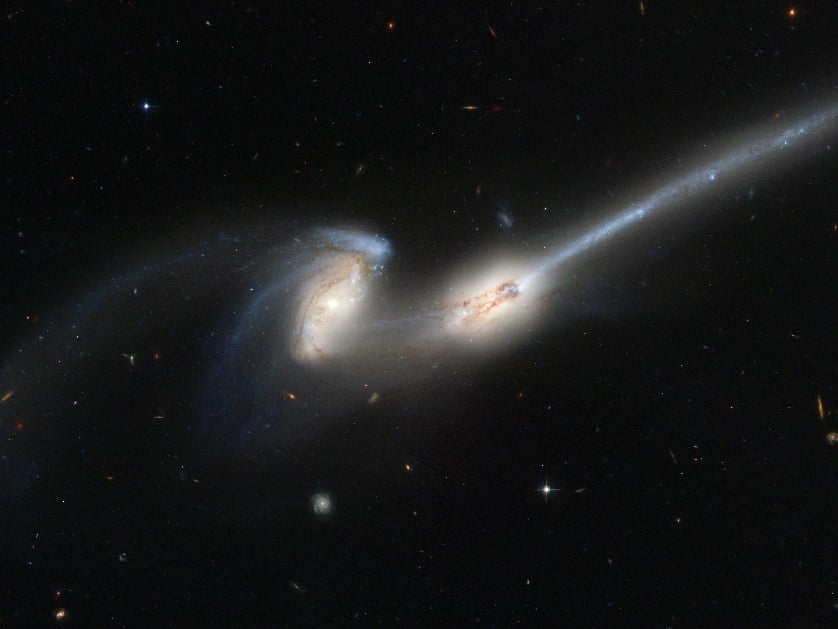This strange-looking galaxy seems to be a spiral with a long tidal tail stretching away. It's known as Arp 122, and it's actually not just one galaxy, but two separate galaxies. NGC 6040 is the warped spiral galaxy seen edge-on, while LEDA 59642 is the round, face-on spiral. The two are colliding about 540 million light-years from Earth, and it gives us a preview of the Milky Way's future collision with Andromeda.
This image was taken by the venerable Hubble Space Telescope
What will Arp 122 look like when the merger is complete? We'll try to keep you posted, but this ongoing merger will take hundreds of millions of years, so be patient.
While galactic mergers incredibly dramatic and energetic events, they occur at a snail's pace, just because of the massive distances involved. But still, even a slow-motion collision can create chaos and grandeur. Star formation begins to ramp up from collisions of gas clouds and extreme gravitational interactions. Usually, the merged galaxies can shine up to ten times brighter than they did individually. Over time, this completely changes the structure of the two (or more) colliding galaxies, usually results in a single, merged galaxy.
The collisions can also create stellar features called tidal tails, like the one seen in Arp 122, or in the Mice Galaxies, above. The tails can look like streams or arcing rivers of stars moving along in the wake of the collision. Other features can be created that look like ripples, similar to how ripples form when you toss a rock into a pond. Astronomers have learned how to interpret the different features to learn more about the original galaxies and their collisions.
And don't worry about the Milky Way’s collision with its nearest galactic neighbor, the Andromeda Galaxy (M31). We have at least four billion years to wait before they actually meet up.
 Universe Today
Universe Today

